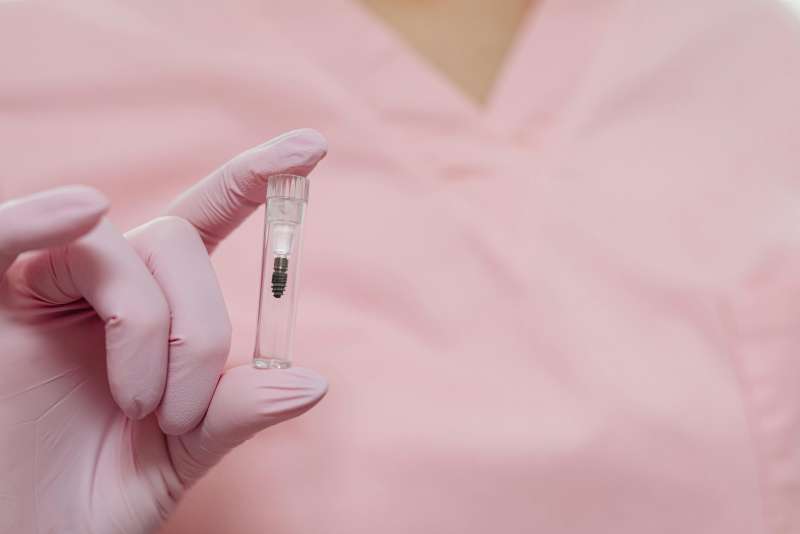Biomedical Technologies: Innovations in Diagnosis and Treatment
Published on: May 14, 2025
Biomedical Technologies: Transforming Healthcare through Innovation
Biomedical technologies represent a rapidly evolving field that bridges biology, medicine, and engineering to create innovative solutions for diagnosing, treating, and preventing diseases. With the integration of genetic and molecular techniques, the landscape of healthcare is undergoing a profound transformation. These advances are not only enhancing the precision and effectiveness of medical interventions but are also paving the way for personalized medicine, where treatment strategies are tailored to the unique genetic makeup and needs of individual patients. The development of new drugs, biosensors, and medical devices is contributing to improved patient outcomes and a higher quality of healthcare worldwide.
Genetic and Molecular Diagnostics: Unveiling the Blueprint of Disease
Genetic and molecular diagnostic technologies have revolutionized the way diseases are detected and understood. Traditional diagnostic methods often relied on observable symptoms or biochemical markers, which could sometimes result in late or inaccurate diagnoses. In contrast, genetic and molecular diagnostics delve into the very foundation of biological processes by analyzing DNA, RNA, and proteins. This allows for the identification of disease at a much earlier stage, often before symptoms appear.
One of the most significant breakthroughs in this area is the development of next-generation sequencing (NGS) technologies. NGS enables the rapid sequencing of entire genomes or specific gene panels, providing comprehensive insights into genetic variations that may contribute to disease. This technology has been instrumental in identifying genetic mutations associated with various cancers, rare genetic disorders, and infectious diseases. For example, in oncology, NGS can reveal mutations in genes such as BRCA1 and BRCA2, which are linked to an increased risk of breast and ovarian cancers. Early identification of these mutations allows for proactive monitoring and preventive interventions.
Another critical advancement is the use of polymerase chain reaction (PCR) techniques, which amplify specific DNA sequences for detection. PCR has become a cornerstone of molecular diagnostics, particularly in infectious disease testing. The COVID-19 pandemic highlighted the importance of PCR-based diagnostics, as they enabled the rapid and accurate detection of SARS-CoV-2, the virus responsible for COVID-19. This facilitated timely isolation and treatment of infected individuals, helping to curb the spread of the virus.
In addition to DNA analysis, molecular diagnostics also encompass techniques such as transcriptomics and proteomics. Transcriptomics involves the study of RNA transcripts to understand gene expression patterns, while proteomics focuses on the analysis of proteins and their functions. These approaches provide a more holistic view of disease mechanisms and can reveal novel biomarkers for early detection and prognosis. For instance, certain protein signatures in the blood may indicate the presence of neurodegenerative diseases like Alzheimer's long before clinical symptoms manifest.
Personalized Medicine: Tailoring Treatment to the Individual
The advent of genetic and molecular diagnostics has laid the groundwork for personalized medicine, an approach that moves away from the traditional "one-size-fits-all" model of healthcare. Personalized medicine, also known as precision medicine, takes into account individual variability in genes, environment, and lifestyle to design more effective prevention and treatment strategies.
Pharmacogenomics, a key component of personalized medicine, examines how genetic differences influence an individual's response to drugs. This knowledge enables clinicians to select medications and dosages that are most likely to be effective and safe for each patient. For example, certain genetic variants in the CYP2C19 gene affect how patients metabolize the antiplatelet drug clopidogrel. By testing for these variants, physicians can determine whether a patient is likely to benefit from clopidogrel or if an alternative therapy should be considered.
Oncology has been at the forefront of personalized medicine, with targeted therapies designed to attack specific molecular abnormalities in cancer cells. Drugs such as trastuzumab (Herceptin) are used to treat breast cancers that overexpress the HER2 protein, while other therapies target mutations in genes like EGFR or ALK in lung cancer. These targeted treatments often result in better outcomes and fewer side effects compared to traditional chemotherapy.
Personalized medicine is also making strides in rare and inherited diseases. For example, gene therapy approaches are being developed to correct the underlying genetic defects in conditions such as spinal muscular atrophy and cystic fibrosis. In these cases, a single treatment can potentially provide long-lasting benefits by addressing the root cause of the disease rather than merely managing symptoms.
Moreover, personalized medicine extends beyond treatment to disease prevention. By analyzing genetic risk factors, individuals can receive tailored recommendations for lifestyle modifications, screening, and preventive measures. For instance, people with a family history of cardiovascular disease may undergo genetic testing to assess their risk and receive personalized advice on diet, exercise, and medication to reduce their chances of developing heart problems.
Innovations in Drug Development: From Bench to Bedside
The process of developing new drugs has traditionally been lengthy, costly, and fraught with uncertainty. However, biomedical technologies are streamlining and accelerating this process through innovative approaches such as high-throughput screening, computational modeling, and artificial intelligence (AI).
High-throughput screening allows researchers to rapidly test thousands of potential drug compounds against specific biological targets. This automated approach significantly reduces the time required to identify promising candidates for further development. Computational modeling and AI further enhance drug discovery by predicting how molecules will interact with their targets, optimizing drug design, and identifying potential side effects before clinical trials begin.
One notable example of innovation in drug development is the use of CRISPR-Cas9 gene editing technology. CRISPR enables precise modifications to the genome, allowing researchers to create disease models, identify drug targets, and even develop gene-based therapies. In 2020, the first CRISPR-based therapy entered clinical trials for the treatment of sickle cell disease and beta-thalassemia, offering hope for a cure for these inherited blood disorders.
Biologics, a class of drugs derived from living organisms, are also transforming the pharmaceutical landscape. These include monoclonal antibodies, cell therapies, and vaccines. Monoclonal antibodies have become essential in treating autoimmune diseases, cancers, and infectious diseases. For example, immune checkpoint inhibitors such as pembrolizumab (Keytruda) have shown remarkable efficacy in treating various cancers by unleashing the body's immune system to attack tumor cells.
Vaccines represent another area of rapid innovation. The development of mRNA vaccines for COVID-19, such as those produced by Pfizer-BioNTech and Moderna, demonstrated the potential for rapid response to emerging infectious threats. These vaccines use synthetic mRNA to instruct cells to produce viral proteins, triggering an immune response without the need for live virus. This platform can be adapted quickly to target new pathogens, making it a valuable tool for future pandemics.
Biosensors: Real-Time Monitoring and Early Detection
Biosensors are analytical devices that combine a biological recognition element with a transducer to detect and measure specific biological or chemical substances. These devices play a crucial role in modern healthcare by enabling real-time monitoring of physiological parameters and early detection of diseases.
Glucose biosensors, commonly used by individuals with diabetes, are among the most widely adopted biomedical sensors. These devices measure blood glucose levels using an enzyme-based electrode, providing immediate feedback to help patients manage their condition. Continuous glucose monitoring (CGM) systems have further improved diabetes care by offering real-time data, trend analysis, and alerts for hypo- or hyperglycemic events.
Beyond glucose monitoring, biosensors are being developed for a wide range of applications, including the detection of infectious agents, cardiac biomarkers, and cancer-related molecules. For example, biosensors that detect troponin levels in blood can provide rapid diagnosis of heart attacks, enabling timely intervention and reducing the risk of complications. Similarly, biosensors for detecting prostate-specific antigen (PSA) or circulating tumor DNA are being explored for early cancer diagnosis and monitoring treatment response.
Wearable biosensors represent a significant advancement in personalized health monitoring. Devices such as smartwatches and fitness trackers can monitor heart rate, oxygen saturation, and physical activity, providing valuable data for both users and healthcare providers. Some wearable devices also incorporate electrocardiogram (ECG) sensors, enabling the detection of arrhythmias and other cardiac abnormalities outside of clinical settings. The integration of biosensors with mobile applications and cloud-based platforms facilitates remote monitoring and telemedicine, expanding access to healthcare and improving patient outcomes.
Environmental biosensors are also gaining prominence, particularly in the context of public health. These devices can detect pathogens, toxins, or pollutants in air, water, and food, helping to prevent outbreaks and ensure safety. For example, biosensors capable of detecting E. coli or Salmonella in food products contribute to food safety and reduce the risk of foodborne illnesses.
Medical Devices: Enhancing Diagnosis, Treatment, and Quality of Life
Medical devices encompass a broad range of instruments, machines, and implants that are used to diagnose, treat, or manage health conditions. Advances in biomedical engineering have led to the development of increasingly sophisticated devices that improve the accuracy of diagnosis, the effectiveness of treatment, and the quality of life for patients.
Imaging technologies such as magnetic resonance imaging (MRI), computed tomography (CT), and positron emission tomography (PET) have become indispensable tools in modern medicine. These devices provide detailed images of internal organs and tissues, enabling early detection of diseases such as cancer, cardiovascular disorders, and neurological conditions. Innovations in imaging, including the use of artificial intelligence for image analysis, are enhancing diagnostic accuracy and enabling earlier intervention.
Minimally invasive surgical devices are transforming the field of surgery by reducing trauma, shortening recovery times, and minimizing complications. Laparoscopic and robotic-assisted surgical systems allow surgeons to perform complex procedures through small incisions with greater precision and control. These technologies have become standard of care in many surgical specialties, including gynecology, urology, and orthopedics.
Implantable medical devices, such as pacemakers, cochlear implants, and artificial joints, are improving the quality of life for millions of people worldwide. Pacemakers regulate abnormal heart rhythms, cochlear implants restore hearing to individuals with severe hearing loss, and artificial joints enable mobility for patients with arthritis or injury. Advances in biomaterials and miniaturization are making these devices more durable, biocompatible, and comfortable for patients.
Telemedicine devices and remote monitoring systems are expanding access to healthcare, particularly in underserved or remote areas. Portable diagnostic devices, such as handheld ultrasound machines and point-of-care blood analyzers, allow healthcare providers to deliver high-quality care outside of traditional clinical settings. Remote monitoring systems enable continuous tracking of vital signs and disease progression, facilitating timely interventions and reducing hospitalizations.
Wearable devices are increasingly being used for rehabilitation and chronic disease management. For example, exoskeletons and neuroprosthetics assist individuals with mobility impairments, while smart insoles and braces monitor gait and prevent falls in elderly patients. These devices are integrated with sensors and wireless connectivity, allowing for real-time feedback and personalized therapy.
Ethical, Regulatory, and Societal Considerations
The rapid pace of innovation in biomedical technologies brings with it a host of ethical, regulatory, and societal challenges. Ensuring the safety, efficacy, and accessibility of new technologies is paramount. Regulatory agencies such as the U.S. Food and Drug Administration (FDA) and the European Medicines Agency (EMA) play a critical role in evaluating and approving new drugs, devices, and diagnostic tools.
Data privacy and security are major concerns, particularly as genetic and health data become increasingly digitized and shared across platforms. Robust safeguards are needed to protect patient information from misuse or unauthorized access. Informed consent and transparency in the use of genetic and molecular data are essential to maintaining public trust.
Equitable access to biomedical innovations is another important consideration. While advanced technologies have the potential to improve health outcomes, disparities in access to care can exacerbate existing health inequalities. Efforts to make new diagnostics, treatments, and devices affordable and accessible to diverse populations are critical to realizing the full benefits of biomedical innovation.
Ethical considerations also arise in the context of gene editing and personalized medicine. The potential to modify the human genome raises questions about unintended consequences, genetic discrimination, and the boundaries of medical intervention. Ongoing dialogue among scientists, clinicians, ethicists, and the public is necessary to navigate these complex issues responsibly.
Future Directions in Biomedical Technologies
The future of biomedical technologies is marked by continued innovation and integration across disciplines. Emerging fields such as synthetic biology, regenerative medicine, and digital health are poised to further transform healthcare. Synthetic biology combines engineering principles with biology to design and construct new biological systems, enabling the development of novel therapeutics, biosensors, and diagnostic platforms. Regenerative medicine seeks to repair or replace damaged tissues and organs using stem cells, tissue engineering, and 3D bioprinting. These approaches hold promise for treating conditions such as heart failure, spinal cord injury, and organ failure.
Digital health technologies, including mobile health applications, wearable devices, and telemedicine platforms, are expanding the reach of healthcare and empowering patients to take a more active role in managing their health. The integration of big data analytics and artificial intelligence is enabling the analysis of vast amounts of health data, leading to new insights into disease patterns, risk factors, and treatment responses.
Collaboration among researchers, clinicians, industry, and policymakers will be essential to harness the full potential of biomedical technologies. Investment in research and development, education, and infrastructure will drive the next wave of innovation and ensure that advances in diagnosis and treatment translate into tangible benefits for patients worldwide.










